The title of this post is a little misleading. As far as my family is concerned, my mother’s ancestors were the last to reach North America, arriving around the year 1900. My father’s family, however, was a full three-quarters Colonial. By the middle-to-late seventeenth century, my father’s early grandparents living in America numbered almost four hundred, but the ancestors of his paternal grandmother were still in Europe, and would not arrive for another two centuries, more or less.
Her name was Sarah Strang, my great-grandmother and the spouse of my great-grandfather Alfred Ayers, and she and Alfred spent their entire lives living in the small, pleasant communities of western New York. Unfortunately, I do not know much about her, apart from the fact that she worked as a pastry chef at various small cafes. Her parents were Lena Yensan and Louis Strang, who both had crossed the Atlantic with their families, Lena at the age of sixteen and Louis at the young age of thirteen months. The Strangs arrived first, in May 1842, after crossing on a ship named Argo, and the Yensans followed in February 1862, on board the Lord Brougham.
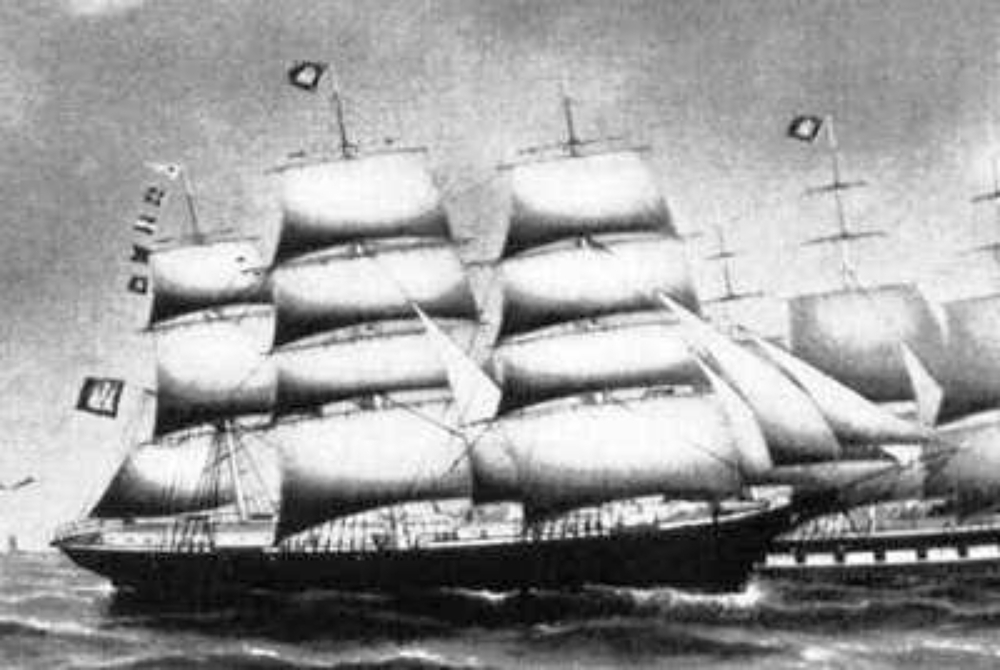
Leading the Strang family were Louis’s parents, another Louis Streng and Magadalena Treiber. On the Yensan line the heads of the family were Christopher Yensan and Dorothy Goldorf. I have previously written about their lives once they settled in Erie County, New York, including Christopher’s and Louis junior’s service during the U.S. Civil War. I also knew, more or less, from where the families originated in Europe, the Strengs coming from Alsace, and the Yensans from Mecklenburg, on the Baltic coast of Germany, and for a long time I was content to let the story end at that point. However, once I had successfully filled in most of the other parts of my father’s tree back into the seventeenth century, and beyond, the big, empty gap extending back from Sarah Strang became a real thorn in my side.
So a few years ago, I decided to make an attempt at researching those branches as well, though I was not confident of success. In addition to the fact that the relevant records are located on the other side of the World, another reason for that was that these ancestor’s names were Americanized
once they arrived in New York, so I really didn’t know who I was looking for. For example, Lena Yensan’s given names at her christening were, Julie Carolina Friederica Sophia Jenssen. In Germany at that time, most children were given three or more forenames, and the name they used as their primary moniker was not necessarily the first one. In her case, she apparently was referred to by her family and friends using the last syllable of her second name Lina
and when she spoke her name to the immigration agent in New York, that was changed to Lena
and Jenssen
was changed to Yensan.
Likewise, Streng
became Strang,
certainly pronounced the same, using a soft A
sound.
I chose to begin working on the Yensans first, and in so doing I took the easy way out, employing the services of a skilled researcher in Mecklenburg who would visit the archives there to search through the Parish records for my ancestors. I was not expecting much. However, to my surprise, it did not take him long to locate the birthplace and parents of both Christopher Yensan, or I should say, Johann Wilhelm Christoph Jenssen and Dorothy Goldorf, or Sophia Dorothea Christiana Gühlstorf. Over the next few weeks, working together, we were able to extend both families back around three more generations. I never would have imagined that would have been possible, but the Germans are well known for having kept good records and that fact definitely paid off in my case.
Flush with that success, I knew I had to make a similar effort for the Streng branch. That would be a little more challenging, since I would largely be on my own. Fortunately, the local government in Alsace had already digitized all of their Parish records, and made them available online. However, that was not as straightforward as it may seem. The records were, of course, all handwritten, either in French, German, or Alsatian, and for one twelve-year period dates were modified to fit the bizarre French Republican Calendar. Nevertheless, I dove in and did my best. Progress was slow at first, but with patience, the assistance of a few contacts made online, the help of a web community that aids in deciphering old handwriting, and the fortuitous discovery of another man’s tree from France that has a branch in common with mine, I eventually succeeded in filling in that branch just as fully as I had with the Yensans.
Since my plans for the World2 Tour would have me in Western Europe during February of 2020, I thought it would be fun to visit both of these locations. Especially since, even though there were not many specific places related to my ancestors available to be seen, the area as a whole might be more similar to what they would have experienced in the mid-nineteenth century, relative to my other ancestral locations, which were left behind hundreds of years earlier. Because it was still dark and cold in February there, I did most of my traveling around that region by train, but I was determined to reach my ancestral villages by cycling in both cases. Even though I discovered the Yensans first, because I visited the Streng’s homeland earlier during the Tour, and because they departed for America earlier, I will start with that branch here.
I had already known the name of the village in Alsace where the Streng family lived before they emigrated, but I later discovered, many of their earlier ancestors lived in even smaller villages scattered around the nearby countryside, such as Climbach, Niedersteinbach, Preuschdorf, and Wingen, which is pictured below.
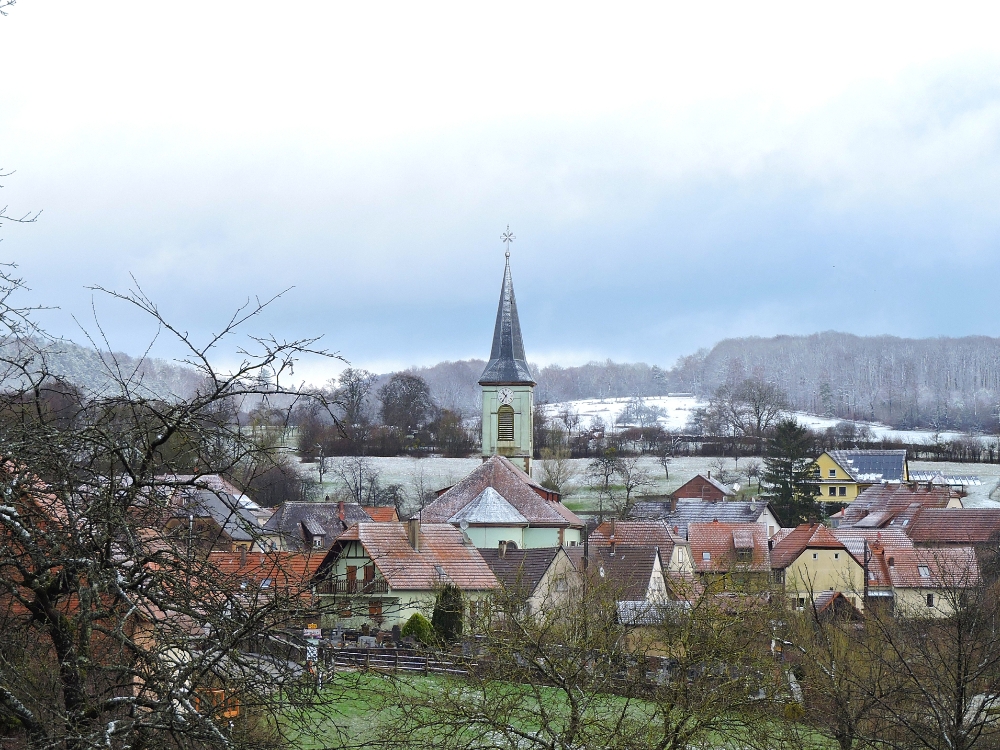
However, most of my ancestors lived in the major village of the region, Lembach. Today, the village is located in the Bas-Rhin Department of France, in the northeastern corner of the country, not far from the Rhine River, and the current border with Germany. In fact, many people will remember that the region of Alsace has, more than once during the centuries between the Renaissance and today, changed hands between the French and German political spheres, a fact that has some relevance for my family history.
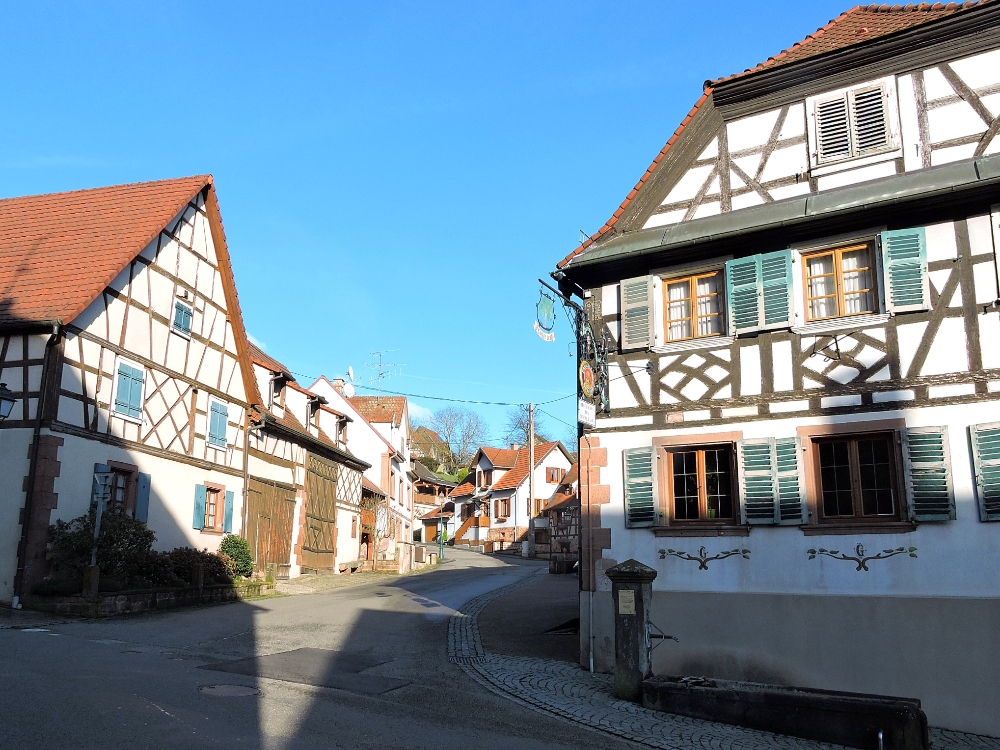
In addition to the Strengs, my ancestral family names on this branch included Treiber, Bauer, Schweickart, Frey, Hetzel, Steffan, Metz, Trautmann, Müntzer, Bey, Bley, Uhlmann, Apt, and Schäffer, among others. Most of these families lived in Alsace for several generations, for as far back as I have been able to trace, but some others arrived in the area after previously living farther east. Some came from Bavaria, a few from Switzerland, and one of my ninth-great grandfathers, Bernhard Löschengruber, had moved west after being exiled
from Peuerbach, Austria in the 1630s. There is no record of why that had happened to him, but history does mention a peasant’s revolt
in that part of Austria around that time, so he may have been affected by that in some way. As a group, all of my ancestors had their baptisms and marriages held in the Protestant Church in Lembach, or the equivalents in the satellite villages. The image below shows the basic Chapel which they visited for these ceremonies. In those days, the structure was used as both a Protestant and Catholic Church, but after France firmed up their control of Alsace in the early twentieth century, a larger and more elaborate Catholic Church was constructed and is now the predominant feature of Lembach. When my relatives signed their names on important documents there, they always used the Germanic variant of their given names (Ludwig instead of Louis, Magdalena instead of Madeleine, etc.) For all of these reasons I feel that my ancestors in this branch of my family primarily considered themselves to be German.
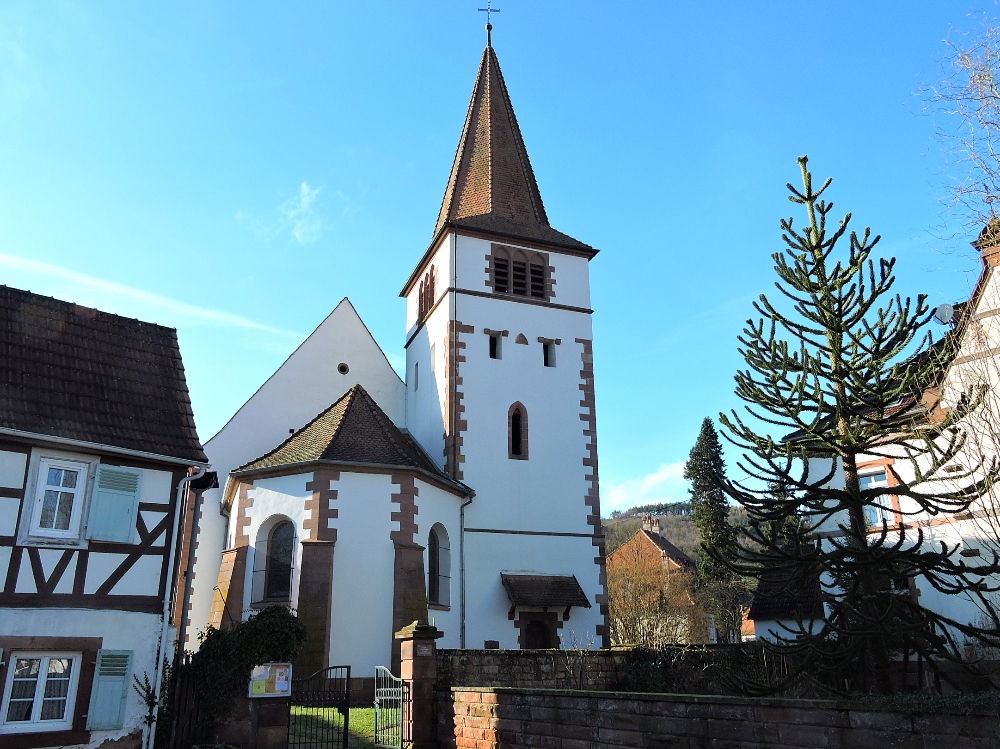
I rode to Lembach from Strasbourg, only 100 km to the south, for a three-day stay, made a short sightseeing ride around the villages, and then crossed into Germany, to head for Mecklenburg. It was very pleasurable riding, with just a little climbing. Had it been later in the spring or summer, I would have really enjoyed extending the cycling portion of my visit, since the area is quite beautiful and the cycling conditions are good. As it was, I still enjoyed reaching Lembach, since the village is picturesque and quiet, a nice place to have in my family history. I was not able to learn many details about the lives of most of my relatives when they lived there, but I do know that at least three generations of my Streng great-grandfathers were cobblers, cordonniers in French, or Schumachers in German. I saw no evidence that there was a substantial shoe industry in the area, so this was probably just the family business.
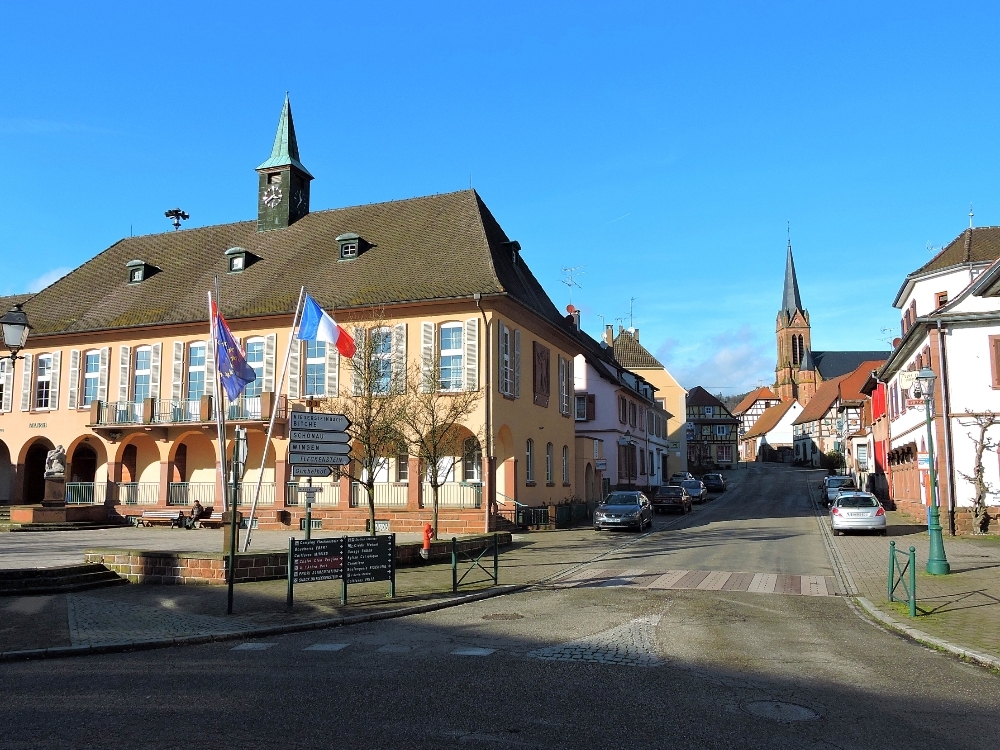
The only modern attraction in the area is a ruined fortress that was part of the Maginot Line, the failed French defensive barriers built before World War II, however, that was not open when I was in the area. Much more interesting to me, in any case, were the ruins of the Chateau Fleckenstein, a castle built in Medieval times on the apex of a narrow granite pinnacle, with an ingenious system for winching water up the sheer rock face to be used by its residents. Today there are just a few ruins visible, not far from Lembach, but wandering through the remaining narrow passageways and staircases that were carved into the mountain was quite enjoyable.
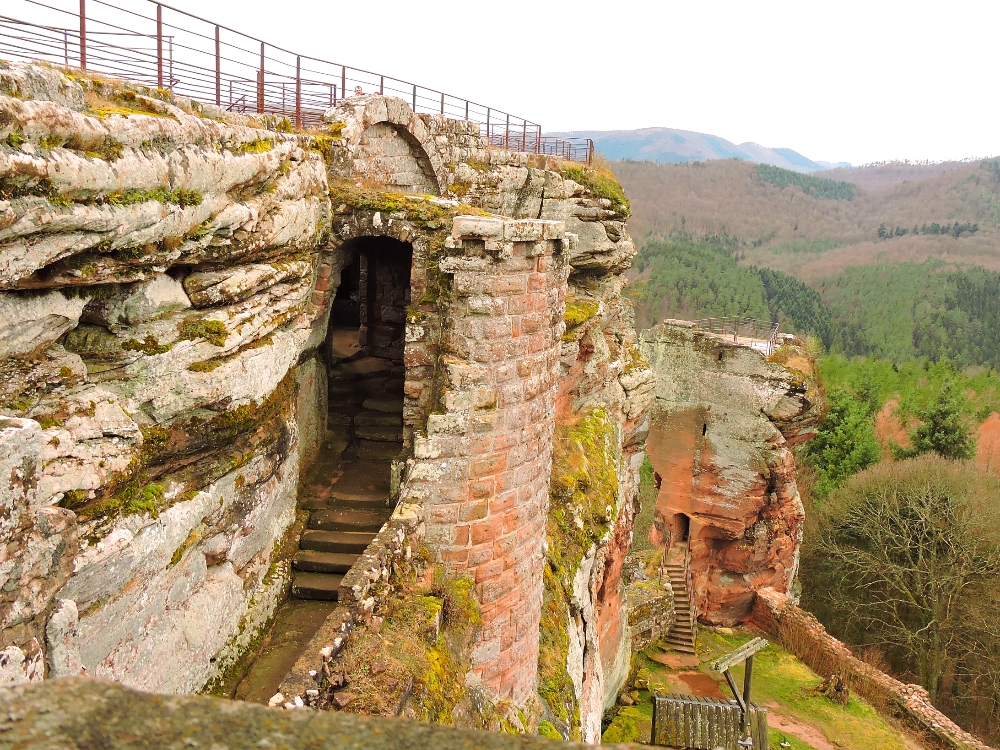
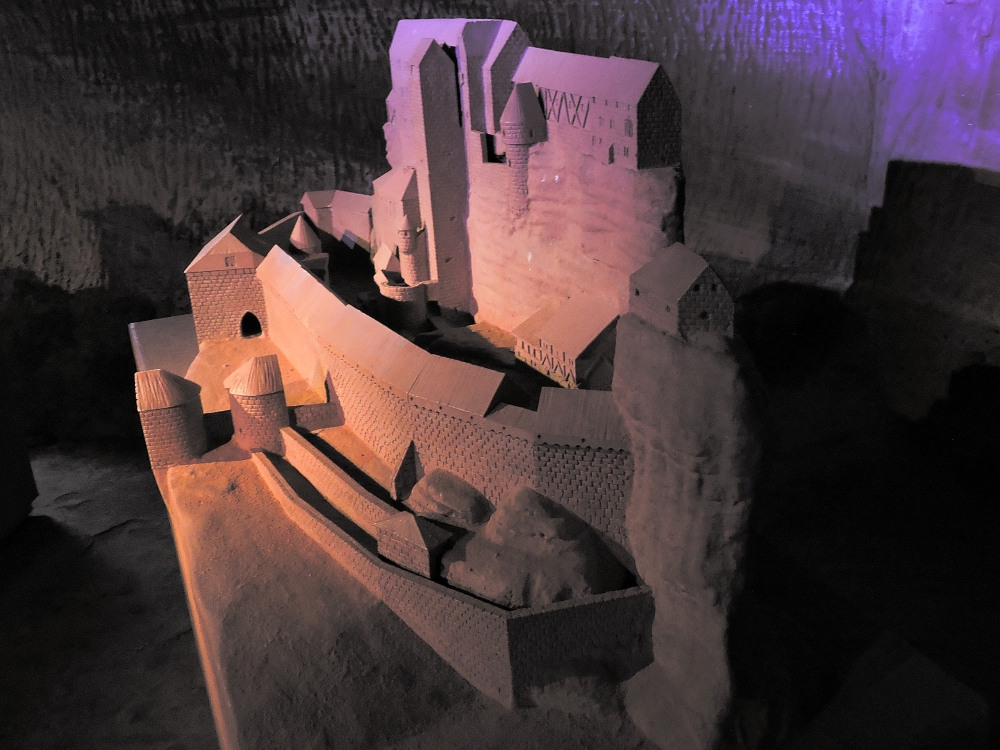
In fact, my family did have a connection to this Chateau. One of my tenth-great-grandfathers, Ulric Trautmann, was said to be a clerk to the Lords of Fleckenstein
in the mid-1500s. I have no real notion of what the duties of a clerk would have been in that time and place, but presumably he would have been a man of some importance. The image below is not Ulric, but rather shows Jakob, Lord of Fleckenstein, who lived at the same time. So, he is not my ancestor, but someone that he may have known personally. A rough translation of the Old German on the banderole gives O flowery Virgin of Aaron, let us hold together.
I also hoped that beyond my visit to Lembach that I would be able hold things together.
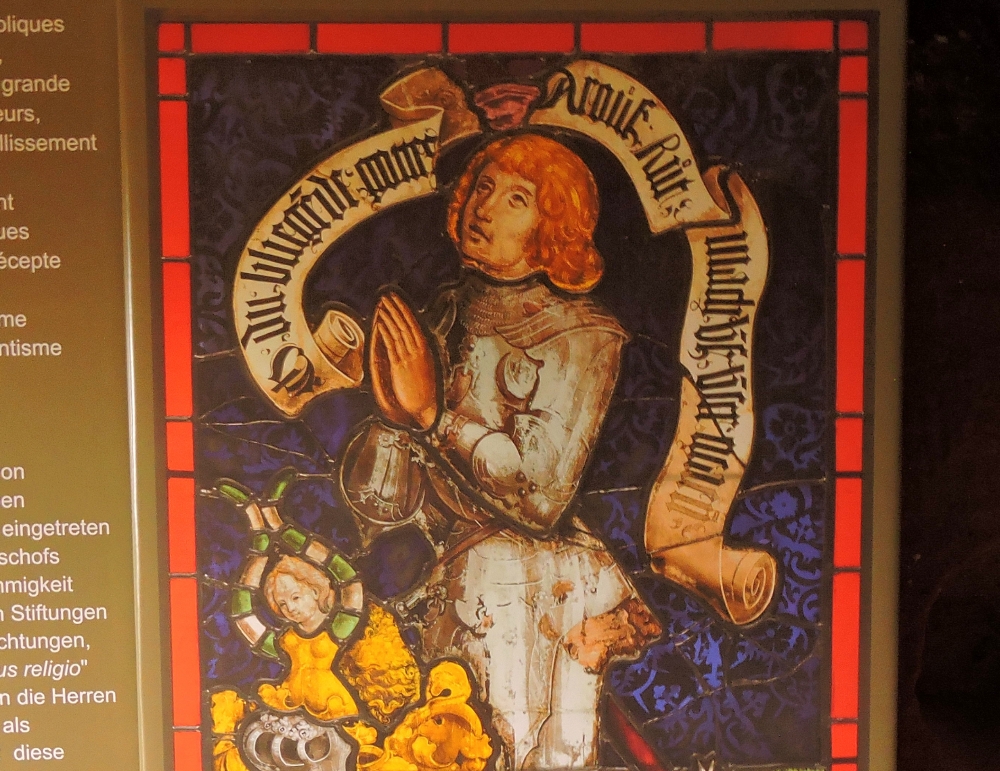
Two weeks later, I arrived in Mecklenburg-Vorpommern, the state in northeastern Germany where the Yensans originally lived. The area in general is a low, fertile plain on the coast of the Baltic Sea with many pleasing vistas, like the one shown below. If my relatives had not departed for America, they would have spent 45 years during the twentieth century in the nation known as the DDR, or East Germany. I rode to and through the area starting from Wismar, but with chilly and blustery weather, plus my less than ideal state of health, I cut back my original goals somewhat. This was my first ever visit behind the old Iron Curtain
and I wondered if I might see some remaining structures built during the Soviet era. However, everything visible today appeared as if it had always existed in any typical Western European nation. There was one place from those days that I would have loved to see, specifically a former military air base, originally built by the Nazis, but then used by the Soviets until the Wall came down. Wandering around the abandoned buildings would have been fascinating, but unfortunately the area is off limits due the chance of stumbling upon unexploded ordinance.
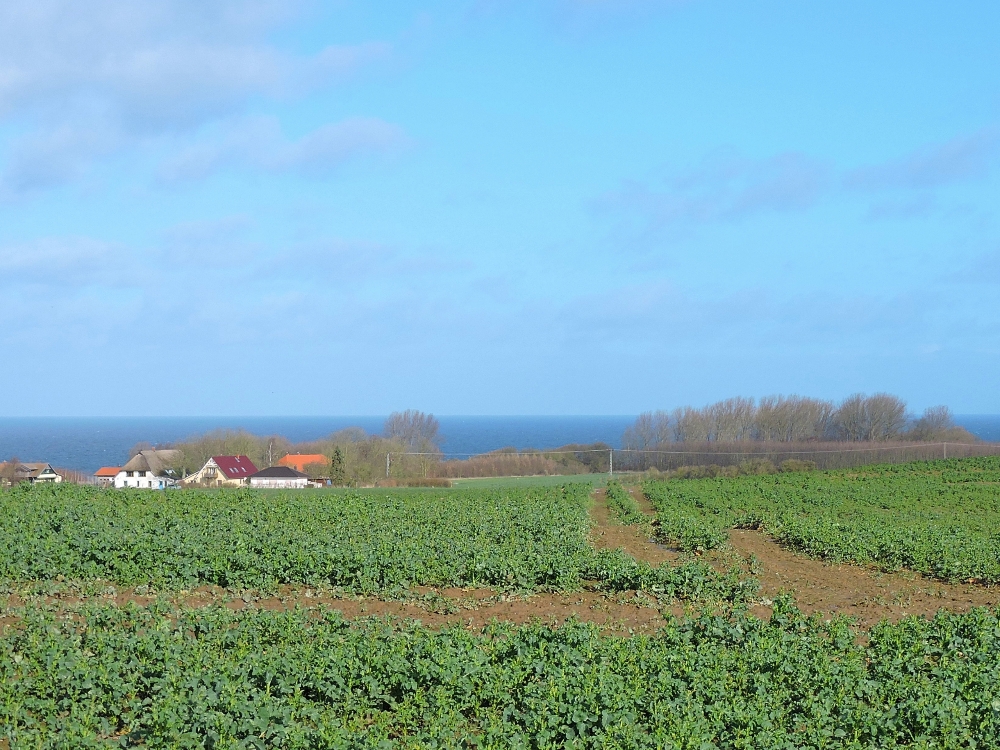
The ancestors of Christopher Yensan/Jenssen and Dorothy Goldorf/Gühlstorf had family names including, Prüter, Kasten, Hardnack, Steinfeldt, Westendorf, Vick, Klinkmann, Klüsner, Otte, Jörss, Clook, Müller, and Stecker. Unlike the Streng branch, it seems like all of these families had lived in Mecklenburg for as long as records have been kept. In fact, the German telephone company has a Web service where one can see the distribution of a particular surname around Germany and, even today, most of those surnames are rare outside of that part of the country. Similar to the branch from Alsace, here many of these ancestors lived in smaller satellite villages surrounding a more central, larger village. Not surprisingly, there were almost no physical structures from the nineteenth century visible today in these smaller settlements, but I rode through a number of them anyway. Two examples, Kägsdorf and Hohen Niendorf appear below.
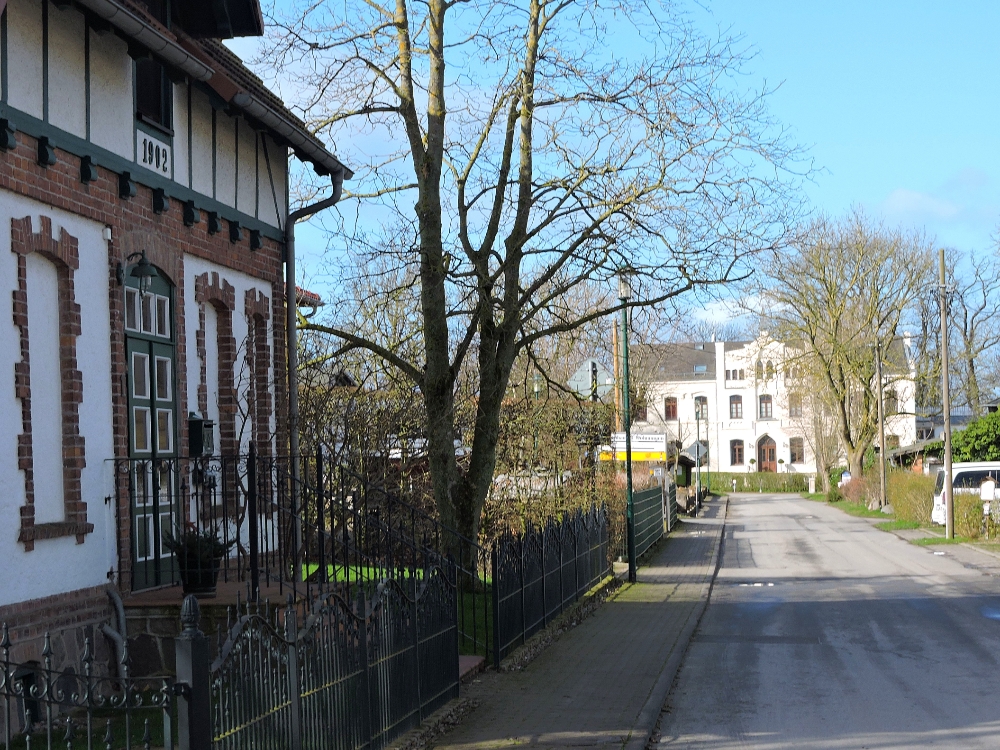
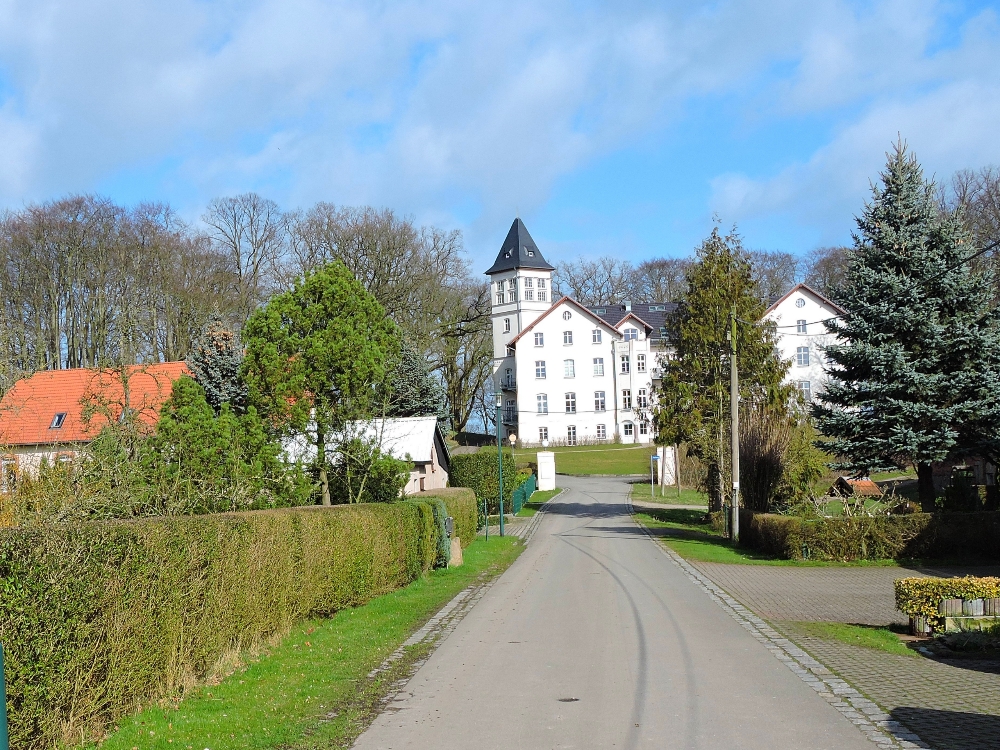
In that era, most of the small villages in that region were organized along a type of modern feudal basis, with a single aristocratic family owning a large Manor House, and the ordinary citizens occupying roles somewhere to the left side of the employee/indentured servant/slave spectrum. Christopher Yensan himself was born in such a place, named Detershagen, though later, when he married Dorothy and they began to have children, the family lived a short distance away in a similar place called Neperstorf. This is interesting because both of those Manors were owned, for a time, by the well known von Plessen family, so it seems likely that since Christopher moved between two von Plessen properties that he was well-regarded by that family. Indeed, just before the family left for America, Christopher’s occupation was listed as a foreman,
indicating he held a relatively high level of employment, possibly allowing him to save enough for his family to move to the other side of the World. Unfortunately, the Manor at Neperstorf was demolished several years ago, so I was not able to see the exact place he would have known so well.
The earlier generations of this family, however, lived in the central village of the area, then called Alt-Gaarz, but now named Rerik. The original name is a Slavic term meaning Old Castle
and the modern name references a Viking settlement thought to have been in that location. Rerik has been a popular Baltic coast resort town for decades, dating back through the DDR years to the early twentieth century. Once again, I expected it might be a funky socialist-style town, but it was actually very charming with a pleasant layout and some excellent architecture. However, the damp and blustery weather during my visit cut down on my enjoyment. What I did enjoy seeing was the old church, which, like in most European villages, is the centerpiece of the town. Many of my ancestors were baptized and married within this simple, but dignified, structure.
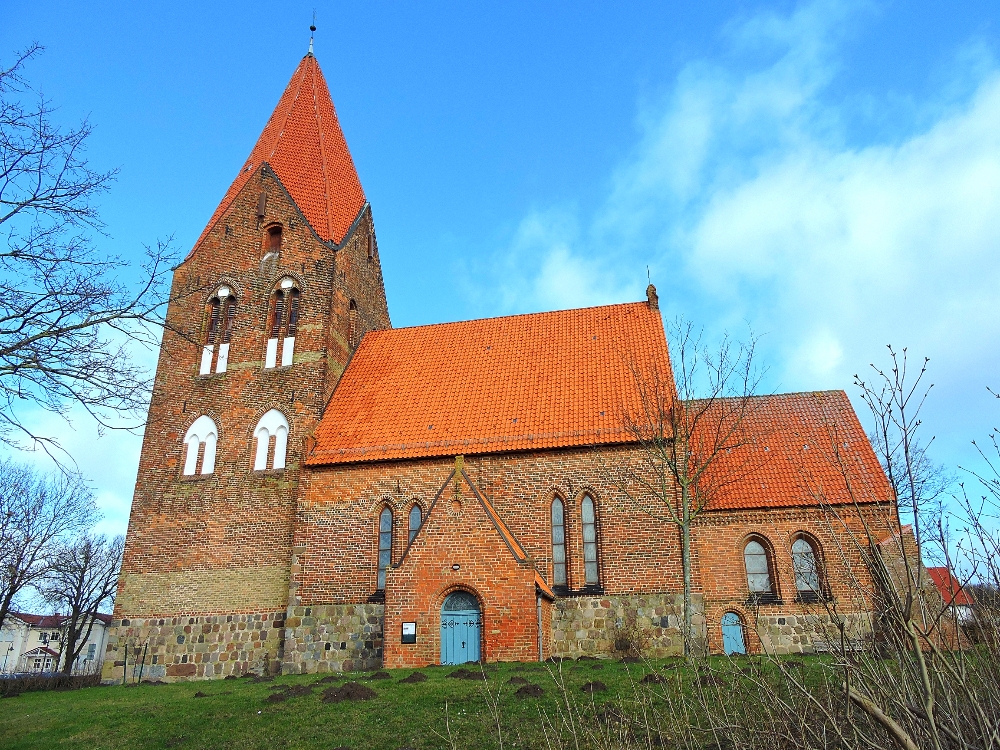
I don’t know if its interior possessed the same type of decoration back in the late 1700s, but it seems possible. Irregardless, I very much appreciated its basic, though elegant, painted designs.
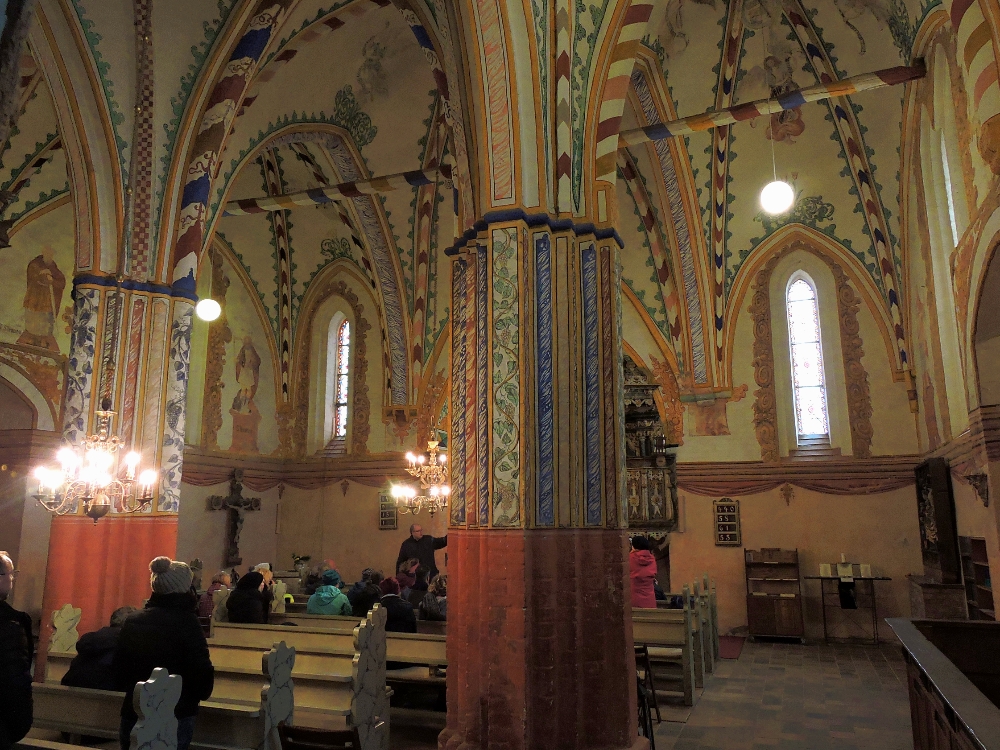
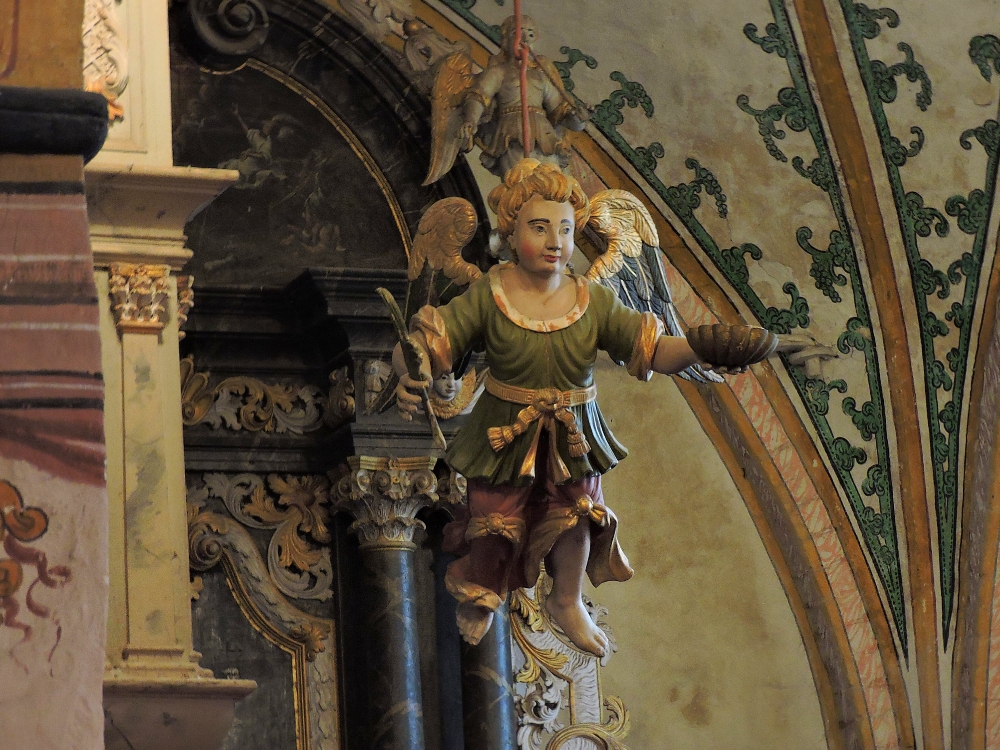
Finally, I took a quick ride through the tiny villages where Dorothy Goldorf and her ancestors lived, which are located a fairly short distance to the southwest. Dorothy was born and grew up in a little settlement called Schimm, which is not far from Neperstorf. Her father, August Gühlstorf, my fourth great-grandfather, also emigrated to America with three of her brothers, but though they also spent a short time in New York, August and two of his sons continued west, eventually settling in Hay Creek, Minnesota. Dorothy's mother, Anna Klinkmann, remained in Mecklenburg, with four more of her siblings. Exactly why the family separated in that manner remains unknown. Today there is not much of historical interest to see in Schimm, but it is a beautiful small, rural neighborhood with several attractive houses and a couple of dilapidated barns that probably do not date back much beyond the twentieth century. The trees lining its main road do seem like they could already have been growing in 1850, however. If trees could talk, perhaps they would tell stories about a little girl named Dorothy, who enjoyed climbing their braches, but who never dreamed that she would one day live far away, in America.
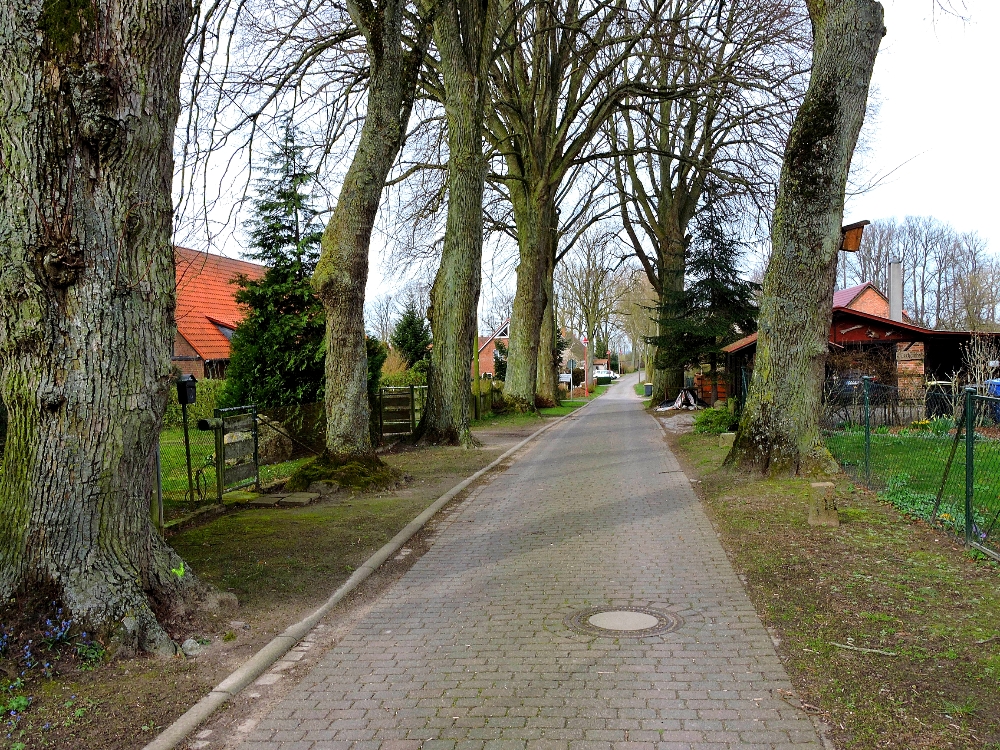
I am glad that I had a chance to see these two parts of the World that are relevant to my own family story. I would have enjoyed the visits even more had not those two locations bookended a period of personal illness. That, however, is a story for the next post.